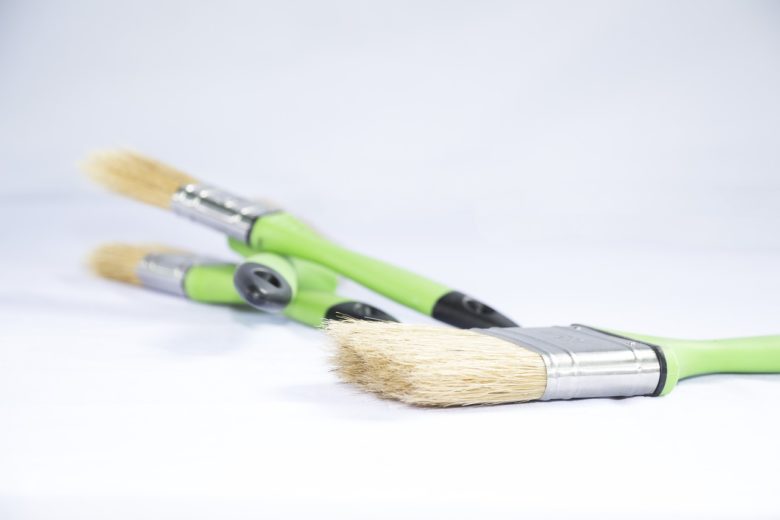
10 Green Home Renovations for DIYers
We are reader-supported. When you buy through links on our site, we may earn affiliate commission.
You care deeply about our planet and are mindful of your carbon footprint, which is one of the reasons you might fantasize about things like triple-glaze windows and a geothermal energy system. Another reason — let’s not kid ourselves — is you’re fond of long-term savings.
For the short-term, however, you’re limited to eco-friendly improvements you can tackle yourself using basic materials.
We’ve got your back on this one. Below you’ll find 10 green home renovations for DIYers that are kind to the environment as well as your wallet — and just may lay the groundwork for higher-end upgrades down the road.
1. Insulate Pipes
Maintain the temperature of hot water as it moves through your house by insulating pipes with fiberglass, rubber or polyethylene foam sleeves. From a material standpoint, the cost is minimal — roughly $10-$15 for the insulation itself and a roll of duct tape. Most commercial foam sleeves come pre-slit along one edge with adhesive on the inside, too.
Just measure your insulation material, cut it, wrap it around each pipe and apply pressure to secure. You may want to adhere duct tape over the connecting seams. Depending on the size of your home, this project can take a few hours to complete.
Not sure which pipes to focus on first? Feel for the ones that are hot to the touch and begin there.
2. Reseal Air Leaks
At least twice a year, preferably in the spring and fall, reseal against air leakage around windows and doors. To maintain ambient temperature efficiently, replace caulking and weather-stripping as needed and seal up any new leaks. Consider installing sweeps under entryway doors as well — you’d be surprised how much of a draft they block!
3. Install Solar Panels
Decrease your reliance on the grid and harness the energy of the sun. Solar array pricing is on a downward trend — thanks in part to tax incentives, purchase rebates and location-specific opportunities to sell excess energy back to your utility company.
As a green home renovation for DIYers, you can purchase a photovoltaic system kit and install panels, inverters and safety connects yourself — just make sure a registered electrician does the metering to the house and wiring. Be on the lookout for user-friendly “plug-in” systems slated to arrive on the scene soon.
4. Incorporate Ceiling Fans
Strategically placed interior fans assure consistent air flow. Depending on the direction blades rotate, ceiling units either keep warm air in a room or push it out. Just flip the base switch to change the function. Make sure any model you choose has blades which are angled at least 14 degrees for maximum benefit.
DIY installation requires only a screwdriver, stepladder, support brace and perhaps an extra set of hands to hold the unit in place while you screw components in and connect wires.
5. Switch to a Programmable Thermostat
You can install a basic programmable thermostat in under an hour. Pre-set temperatures for different times of the day based on your schedule and comfort level. Many models have wireless monitor access, too, so programming from a remote location is possible. Future high-tech units even advertise the ability to adjust the settings based on prior scheduling!
6. Build-In Houseplant Design
Improve interior air quality naturally by adding green, literally, throughout your home. Consider container gardening in built-in deepened box planters, decorative niches and even vertical space!
Do you have a feature wall that gets a lot of natural light? Make it into a living wall with reclaimed wood and clips for hanging terra cotta pots. Or invest in a self-watering system for a large-scale floor-to-ceiling green design.
7. Configure a Rainwater Catch
Household use of “grey” water in places like toilets and your washing machine cut water consumption by as much as 50 percent. Attach a catch barrel or tank to the runoff of your drainage system with gutter screening to filter leaves and debris, a wood pallet for a base and garden hose spigot hardware.
Don’t forget to check the tank for sludge build-up every few years. If build-up occurs, you’ll want to completely drain and clean your tank.
8. Create a Centralized Recycling Center
Do you have non-stream recyclables in paper bags, cardboard boxes and trash cans all over your house, yard and garage? Is routine collection first a matter of organization in your home, then again at the curb? Look at your living space creatively and see if you can convert an unobtrusive centralized location for recyclables.
Consider under-cabinets with bins hidden behind closed doors and holes cut on top for easy access. You might also look at a movable island with labeled slots for cans, bottles, plastic and paper products that can be rolled outdoors for picnics or into a rec room for parties.
9. Attach a Clothesline
Dry clothes and linens naturally bring the fresh air in with a vintage clothesline you can reel from inside. If you’ve got a window in or near your laundry area and a bit of land outside, this one’s a no-brainer. You’ll need a 4X4 or 6X6 piece of lumber for the upright, a 2X8 piece for the cross arm, line and pulley hardware.
Don’t want it attached to the house? Construct a free-standing structure anywhere you get plenty of wind and sun with double the lumber.
10. Construct a Wind Turbine
Do you sit on quite a bit of land — an acre or more — with a good cross-breeze? If so, you’ve got a fantastic scenario for harvesting wind energy. Even better, you can construct a wind turbine yourself out of scrap metal and a car alternator, or even spare bicycle parts. You will need more than a bit of mechanical finesse, innovation and persistence for this project — but between the wind and solar power harvest potential, you may be moving off-grid faster than you’d ever imagined!
Maybe you can’t install triple-glazed windows or a geothermal energy system immediately. With DIY ingenuity and timely tips, you can renovate toward greater sustainability from the get-go — and enjoy green energy savings for years to come!
Share on
Like what you read? Join other Environment.co readers!
Get the latest updates on our planet by subscribing to the Environment.co newsletter!
About the author

Jane Marsh
Starting from an early age, Jane Marsh loved all animals and became a budding environmentalist. Now, Jane works as the Editor-in-Chief of Environment.co where she covers topics related to climate policy, renewable energy, the food industry, and more.





